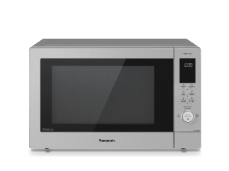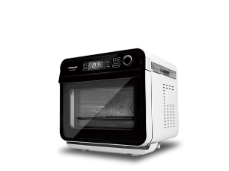How to Make the Perfect Pie Crust

The apparent simplicity of a pie crust recipe often belies the difficulty in its making. Many a home-baker often ends up in tears (some chefs even) when presented with the prospect of constructing pies.
So, what is a good (or even perfect) pie crust?

According to conventional wisdom, the perfect crust should be light or short-eating but not necessarily melt-in-your-mouth quality as this tends to create the gummy mouth feel when chewed. It should have minimal shrinkage as this would cause the pie wall to collapse and lastly, the base of the pastry should achieve a certain golden brown quality after baking.
Common problems involving pie-making include dough toughness, dough shrinkage, difficulty in handling the dough, and the base of the dough appearing pasty.
The main ingredients of a pie crust recipe are: a low protein flour, a good quality fat, salt and water. Of course there are differing opinions such as the addition of a little sugar, cream or egg.

First, let us consider why a low protein flour is recommended. Low protein, by its name, suggests a lower amount of vegetable protein found in regular flour, otherwise known as gluten. Gluten is the culprit that causes toughness and shrinkage in pie crusts. Usually, it is developed through careless handling such as over-kneading the dough. So when making pastry, light handling is the key.
The next important point when making pie crust is to ensure the fat (be it of any source) is absolutely cold. This fat is then rubbed into the flour as quickly as possible without the fat returning to an oily, liquid state. These tiny fat globules are the reason that create the microscopic holes in pastry that result in the short-eating quality. Rubbing in can be done using the paddle of a mixer or by hand with only the fingertips used to ensure heat from the rest of the hand doesn’t warm up the pastry.
Salt, apart from imparting taste to the pastry, also strengthens gluten.
Water, often dismissed by many chefs as an afterthought, is actually a great binding agent for pastry. Apart from binding the flour, fat and salt into a workable mass, it disappears after baking. Egg as a binding agent, on the other hand, has the inherent suggestion of adding richness to the pastry, but actually toughens it.
One of most defining skills of a pastry chef is the way they pin out a piece of pastry and how they manipulate the rolling pin.
The pastry must be dusted with flour just sufficiently both on top and at the bottom to prevent sticking. Too much dusting dries out the pastry and causes tearing during pining out. However, if the pastry is stuck to the table, the rolling only causes tension to the surface of the dough, resulting in shrinkage.
When the desired thickness is achieved, check the four corners of the dough to ensure it is of even thickness for even baking.
Brush away any excess flour off the surface of the pastry that is to be lined and touching the baking tin. Any excess flour when heated causes a gas that lifts the pastry during baking, resulting in the ‘bubble’ effect.
Lining the wall of the baking tin is the trickiest. It is often the cause of many a heartache. The idea is to ‘tuck in’ rather than push in place the pastry as the latter will stretch the gluten and cause wall collapse.
Next is the ‘thumbing’ stage where the pastry should be thumbed to fit snugly to the wall of the tin.
Lastly, allow the lined pastry to rest (to relax the gluten) in the fridge for some time before baking.
Ovens should always be pre-heated to a hot temperature of between 180 C (has fan) and 200 C (without a fan).
To prepare the pastry for blind-baking (baking without a filling), a round of baking paper is fitted snugly on top of the pastry and a heat resistant product such as rice or beans or ceramic balls is placed on top.
Bake the pastry for anything from 6 – 12mins or about half way through. The paper top and dry rice should be removed, and the pastry returned to the oven to complete the baking.
There is some debate regarding the need to “dock” (meaning to poke holes on the pastry with a fork) pastry. It has been our observation that most chefs dock as a matter of practice but the intention is obscure. The logical purpose is to prevent the base of the pastry from rising but is it always necessary?
Docking should only be done if the eventual filling of the pastry shell is already pre-cooked. If any further baking is needed, there is a danger that the filling will seep through the holes and stick to the mould.
Finally, observe the colour. A well-baked pie crust should be of a fawn colour, as the English would say.
Just a tip:
To simplify the process, all the ingredients can be placed into a Panasonic Food Processor to mix until a dough is formed.








